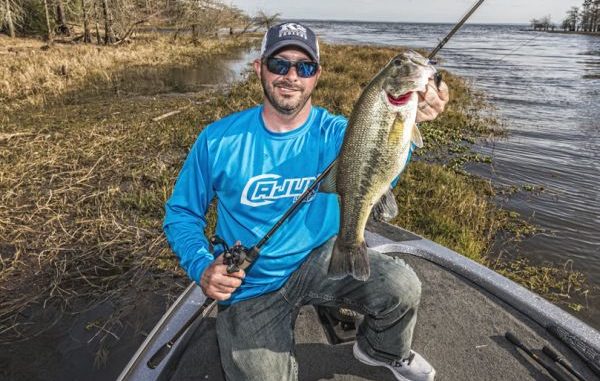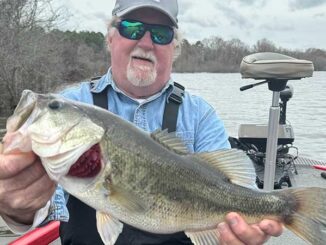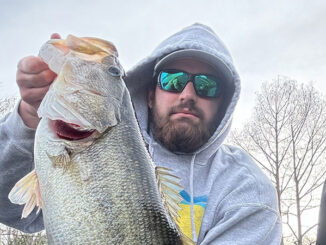
Pitching thick cover is tough but rewarding, Youngsville angler says
Hay grass is fairly new to Toledo Bend, but over the past couple of years it’s really become one of the top ways to land quality fish.
But it can be tough, as I learned on a recent trip to the reservoir that was named last year by Bassmaster as the nation’s No. 1 bass fishery.
In other words, the 3/8-ounce weight above my craw worm just wasn’t cutting it.
John Pecoraro’s soft-plastic offering, on the other hand, was sliding right through — and he soon set the hook on a decent fish.
The difference was all about the weight: Pecoraro had topped his Strike King Rage Tail with a 1 1/4-ounce tungsten weight, which provided the punch he needed to break through the canopy of vegetation.
In fact, the dumbbell attached to his line was the minimum weight he uses.
“I use anywhere from 1 1/4 to 2 ounces,” said the Youngsville angler who spends the bulk of his fishing time on Toledo Bend.
There were some patches of hay grass we found in the Housen and Indian Mounds area that even 2-ounce weights wouldn’t penetrate.
Another consideration is the type of bite you’re trying to detect. Don’t expect to feel a lot of bites. In fact, if you do feel a bite, it’s probably a dink.
Instead, it’s a matter of differentiating between your bait being caught in the grass and being held in a bass’ mouth. It ain’t easy sometimes.
“The fish are right under the canopy,” Pecoraro said. “It’s a reaction bite; when you punch it through, that fish scoops it up.
“It’s about like it’s hung up on a blade of grass. You feel it punch through, and then it stops.”
That’s where feel comes into play. The best advice is to set the hook if something just feels different.
“It’s when you know you’ve broken through (the mat) and it stops,” Pecoraro said.
In fact, if your rig plunks to the bottom, you probably won’t get a bite there.
And bigger fish often will just suck in the lure and swim toward deeper water — which means to the boat, the angler said.
“You’ll look down and see the fish, and you know you have to set the hook and get it all the way back over there (to where the line goes through the grass) and out of there,” he said.
Of course, not all hay grass is equal. There are fields of it on shallow points and flats, but those aren’t likely to hold any bass.
Water depth is the key.
Pecoraro said there has to be enough depth below the surface — ideally 6 to 8 feet — for the grass to canopy while allowing bass to have freedom of movement.
And then it’s just a matter of finding the right stretch, which can be maddening.
“Sometimes you can go along and not get any bites, and hit one section and get several (bites),” Pecoraro said. “It’s like they’re ganged up in that one spot.”
Click here to learn what equipment you need for this productive bass-fishing tactic.


